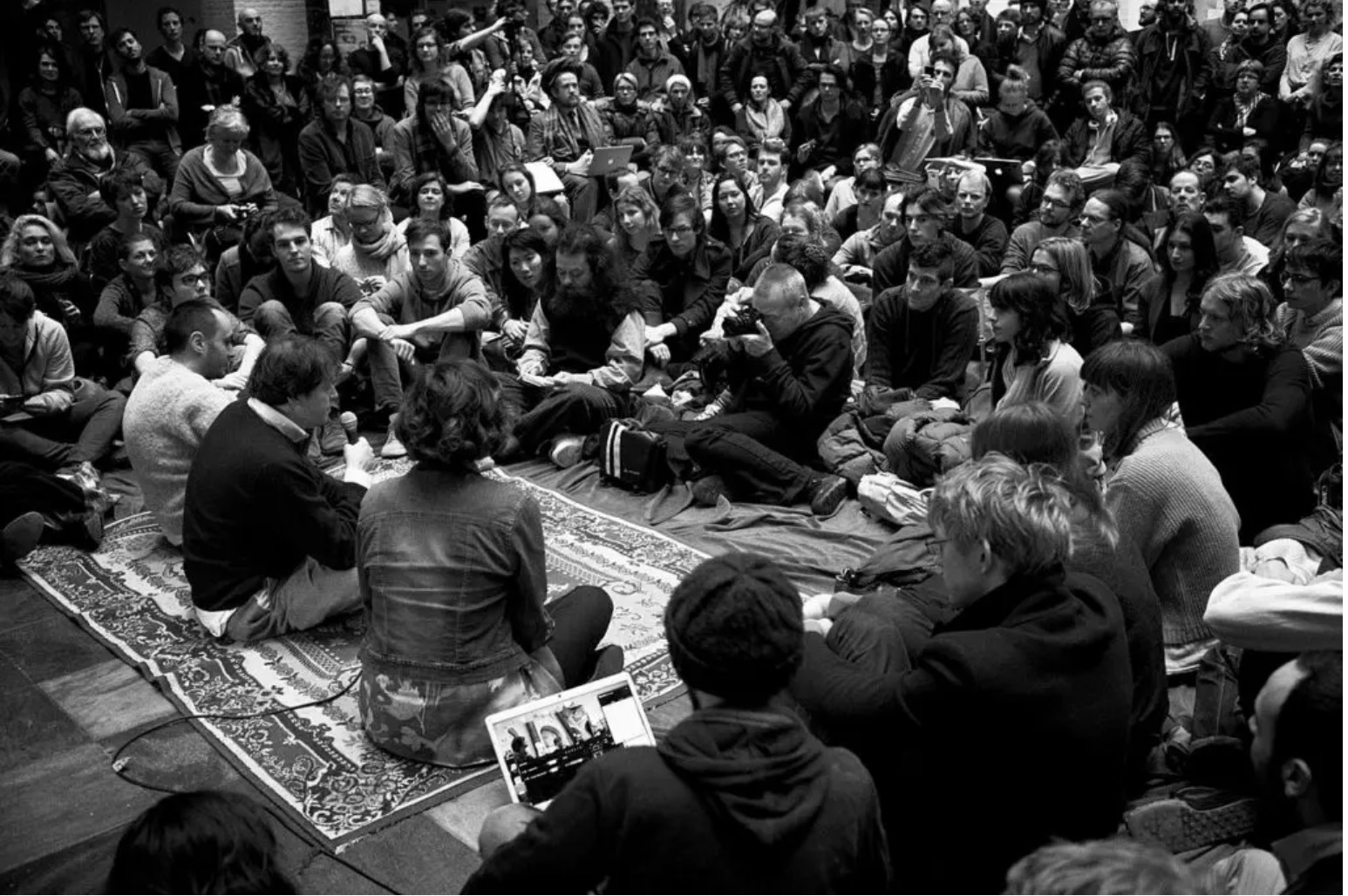This project is a research of the decision-making process that people practice in different cultures, age groups, historical times, and social situations. We collect interviews from a number of different people: a London policeman and co-founder of Extinction Rebellion, anthropologists working in traditional communities, and autonomous movement activists.
We publish the interviews online and distribute them through a network of friendly resources, including our own museum.care and a4all.org. Within a year, we will begin the editing process. Perhaps the initial interview materials will be used by several authors or author teams at once. Under our license, we open the materials for everyone.
I want to point out, that such a production process is unusual. Normally the authors keep their materials for themselves, think over the idea, and, later, produce the finished project. But our task is to leave the author’s freedom untouched, allowing everyone to do what he or she wants, nevertheless opening the project to all. It is partly, because this project was born out of a humble confrontation in the Museum of Care, where ideas about the collective and the individual had collided. We were wondering; who can permit and prohibit, who can make decisions, or how do we make decisions together, and who are “we” in the first place?
The way that we shaped the Collective Documentary project is an attempt to answer these questions. It is research into the decision-making processes that people practice in different cultures, age groups, historical times, and social situations. We record interviews on zoom with different people; a London policeman, a co-founder of Extinction Rebellion, anthropologists working in traditional communities, autonomous movement activists, kids and their parents, and so on and so forth.
Current technology facilitates this—everyone can interview whoever they want and post it online with hashtags to be a part of the project and, since the Museum of Care has a community of hundreds of people, we can help distribute it.
Anyone can go download and edit these materials to make their own version of this future documentary. The license allows free use of the materials. Hopefully, many people will do it!
The production and distribution of the Collective Documentary ‘How to Make Decisions’ follows the basic principles of the Museum of Care.
It is open to everyone: everyone can own it, change it, save it, share it and have the final say in it, so as to become “an author.”
No one can stop anyone or order anyone around.
No one can become the police officer, the director, the curator or, in fact, establish any kind of hierarchy at all.
The openness of the project is important; it recognizes instead that in any society decision-making is a human practice that begins at birth and ends with death.
So, what is going happens to all these interviews that are freely available on youtube?
We already have about 8 interviews, but 2 of them that seem very different, in fact, relate to each other:
One interview is with former London police officer Paul Stephens, who compared the decision-making process in the London Police under the Labor and Tory governments and another is an interview with Matthew Schultz describing his field research in Bolivia in 2010, when they approved the new constitutions that made the Bolivian indigenous courts on equal legal standing as the state courts.
Both Stephens and Schultz describe the existence of two parallel decision-making structures: the state (the police in the UK and the state justice system), and the community (community centers in the UK and indigenous courts in Bolivia). The interactions of these structures are surprisingly similar, as are the unfortunate results of the destruction of a complex balance of this type of social architecture.
There probably would never be a “final version” of this documentary. The materials (interviews, conversations, chats) will always be out there for the people to use them, but I hope that there will be several versions of the video essays made by people who use interview materials, mix them with their comments and publish them online, art exhibits and video installations, books and articles analyzing conversations. And surely someone else can come up with and implement completely unexpected forms of using our materials: a theatrical production? a series of posters?
Will we be able to organize ourselves and make collective decisions that combine both care and freedom, replacing production and consumption in this newly born Museum of Care?
We don’t know. We are trying to create a new space that no longer celebrates production, of any sort, but rather provides the space and means for the creation and reimagination of social relations.
My vision of the final film is a personal video essay with commentaries and video insertions from my Soviet childhood and adolescence in Paris, Moscow and New York, in the days of the dismantling of the welfare state, with talk of democracy and freedom.

